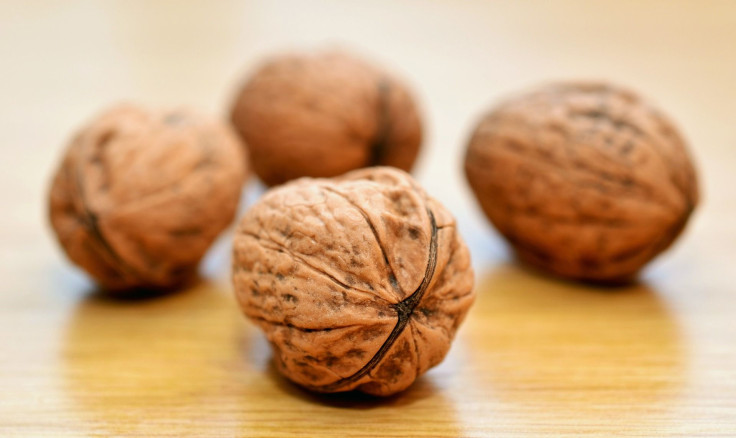Why Walnuts Might Be Your Best Weapon Against Fatty Food Cravings

High in antioxidants and good fats, nuts are a pantry staple for every health conscious person. Dieters typically rely on the heart-healthy food for a high-protein snack that satisfies, but a new study indicates that nuts' nutritional profile isn't the only thing that makes them a good food for weight loss. Researchers at Beth Israel Deaconess Medical Center (BIDMC) have found that walnuts activate an area in the brain linked to controlling hunger and cravings. Published in the journal Diabetes, Obesity and Metabolism, this is the first time research has shown that nuts may actually change the way your brain works and possibly prevent cravings.
"We don't often think about how what we eat impacts the activity in our brain," said study co-author Olivia M. Farr, PhD, instructor in medicine at BIDMC, in a statement. "We know people report feeling fuller after eating walnuts, but it was pretty surprising to see evidence of activity changing in the brain related to food cues, and by extension what people were eating and how hungry they feel."
For the study, 10 people classified as obese visited the BIDMC’s research center on two different five-day sessions. During one session, everyone drank daily smoothies made with 48 grams of walnuts, the recommended serving by the American Diabetes Association. In a separate visit, participants received a smoothie without walnuts, though it was nutritionally similar and had the same flavor as the nut smoothie. The study was randomized, so volunteers and researchers were unaware which smoothie contained nuts. On the last day of the sessions, everyone went through a functional magnetic resonance imaging, or fMRI, test. This allowed researchers to detect changes in the brain by looking at oxygen levels. When an area is more active, more oxygen is present to help with the increased blood flow.
The team showed participants images of food porn, like hamburgers and desserts, neutral photos of flowers and then food items that don’t necessarily cause cravings, such as vegetables. Unsurprisingly, people reacted to the unhealthy food images. But, the reaction isn’t what you think. An area in the brain that’s associated with control known as the right insula became more active when people who drank the walnut smoothies viewed images of unhealthy, but delicious, food.
"This is a powerful measure," said Christos Mantzoros, MD, and director of the Human Nutrition Unit at Beth Israel Deaconess Medical Center as well as professor of medicine at Harvard Medical School. "We know there's no ambiguity in terms of study results. When participants eat walnuts, this part of their brain lights up, and we know that's connected with what they are telling us about feeling less hungry or more full."
Researchers now plan on testing quantities as well as other varieties of nuts to see if a similar effect is produced. Aside from their ability to control cravings (maybe!), eating walnuts comes with many other health benefits. They’ve been show to help fight inflammation, reduce bad cholesterol, prevent plaque build up and support healthy bones and immunity.
Published by Medicaldaily.com



























